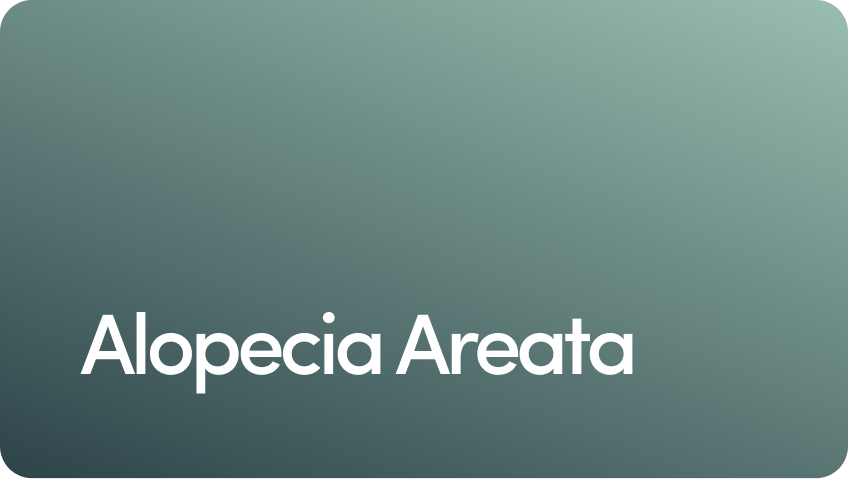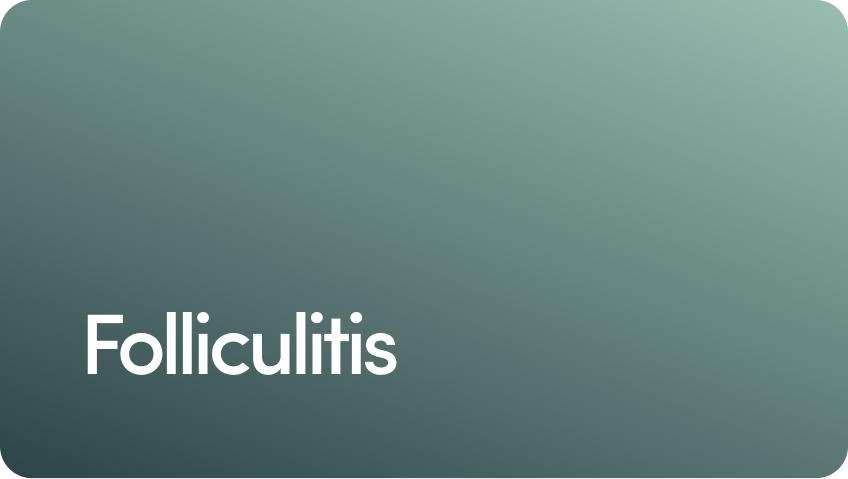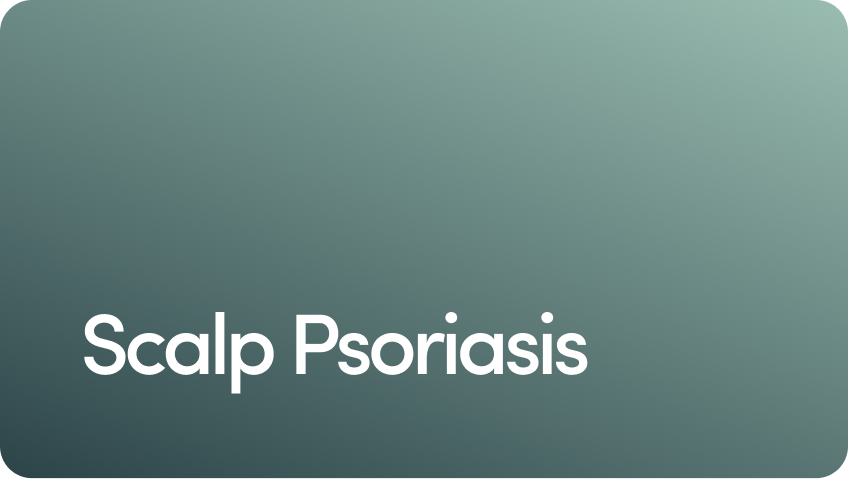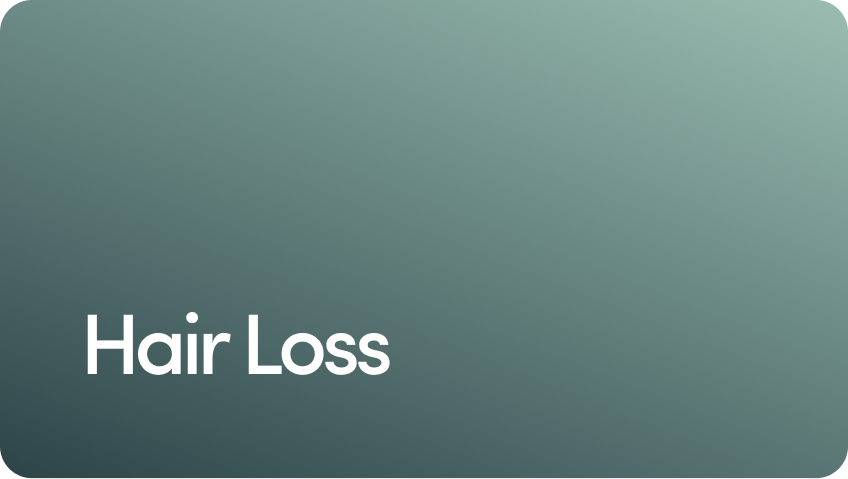How to Build The Ultimate Curly Hair Routine
Curating the perfect haircare routine for naturally curly hair can be overwhelming at first — but you don’t need a ton of fancy products to achieve healthy-looking hair.
Your Curls Deserve Better — Here’s How We Keep Ours Happy
Overview
Curating the perfect haircare routine for naturally curly hair can be overwhelming at first — but you don’t need a ton of fancy products to achieve healthy-looking hair.
Consider this your all-in-one guide to embracing and enhancing your curls.
Every curly hair journey is unique. What works wonders for one person’s curls may be less than ideal for yours.
To put together this comprehensive, step-by-step curly hair guide, we spoke to two curly-haired women — Bianca Anderson and Grace Gallagher — about their experience with the popular "curly girl" method. They also shared some of their personal tried-and-true tips.
Let’s dive in.
The Basics of Curly Hair
To understand what kind of styling and curly hair products curls respond to, let’s go over some basics.
Why Does Hair Curl?
The short answer is genetics.
Curly hair prevalence varies by ancestry. Some research suggests that 40–45 percent of white people have wavy hair and only 12–15 percent have curly hair. Additionally, 41 percent of Asian people have wavy hair and 95 percent of Black people have curly hair. That’s a lot of curls!
On a cellular level, it comes down to how keratin — the protein that makes up hair — is distributed along each strand.
In straight hair, keratin is evenly spread across each piece of hair, keeping it uniformly straight.
In curly hair, keratin is unevenly distributed, so it accumulates more on one side than the other. This unevenness results in hair that bends and forms a spiral or wavy shape.
Styling products and techniques can also influence how hair looks and what shape it holds.
What Is The Curly Girl Method?
The Curly Girl Method (CGM) is a popular hair care routine created by curly-haired author Lorraine Massey. The goal of CGM is to help curly-haired people embrace and enhance their curls, while keeping them healthy and damage-free.
The core pillars of CGM include:
Embrace natural curls without using chemical treatments.
Avoid harsh ingredients that can change the curl pattern.
Co-wash hair – which involves adding conditioner to shampoo when washing, or skipping shampoo altogether to avoid stripping hair and scalp of natural oils.
Style by gently raking curl-defining products through damp hair to encourage more curl definition.
Air dry and avoid hot tools that can result in breakage and change the natural look of curls.
While both Grace and Bianca have experimented with this method, they don’t strictly follow it to a tee.
Before we jump into CGM details, let’s go over some things to consider about curly hair.
Things to Consider About Curly Hair
Not All Curly Hair Is the Same
Despite how common curls are, many mainstream haircare products and techniques cater to straight hair. This can make it harder to find what works best for your unique texture.
Curly hair comes in a variety of textures and curl patterns, from loose waves to ringlets and tight coils.
Here's what to consider about your hair while you figure out how to tailor your curl routine:
Understand Your Curl Pattern
Curl pattern refers to the shape of your curls. There are 4 main types: 1, 2, 3, and 4, and then three subtypes within each: A, B, and C. The letters refer to the width of the wave or curl.
Here’s a breakdown:
A | B | C | |
1 (Straight) | 1A: Super straight hair | 1B: Straight hair | 1C: Straight with a slight bend |
2 (Wavy) | 2A: Wavy hair with loose waves | 2B: Wavy hair with tighter waves | 2C: Wavy hair with a super tight waves |
3 (Curly) | 3A: Curly hair with a loose curl | 3B: Curly hair with a tight curl | 3C: Curly hair with a super tight curl |
4 (Coily) | 4A: Coily hair with looser coils | 4B: Coily hair with tight coils | 4C: Coily hair with a super tight coil |
Your curl pattern can evolve over time due to factors like:
Hormonal changes
Aging
Lifestyle
Grace shares that her curls have changed a lot throughout her life: “After having my son, my hair is now more wavy than curly, without much of a defined curl pattern.”
Grace identifies as a 2C or 3A. Bianca, on the other hand, has a 4B hair texture with some looser 4A sections around her face.
Understanding how your curl pattern behaves in different conditions, like humid weather, and with different styling methods can help you refine your approach and achieve consistent results.
Identify Your Hair Texture
In addition to curl pattern, hair can also vary in thickness, from medium, coarse, to fine hair.
This can also influence which products work best. For example, fine curls might do better with lightweight formulas that won’t weigh them down, while thicker hair needs richer, more hydrating products.
Learn About Porosity
Hair porosity refers to how well your hair absorbs and retains moisture.
Genetics and styling habits can play a role in how porous your hair is.
The best curly hair products for lower-porosity hair are lightweight and don’t sit on the surface of your hair. Hgher-porosity hair craves rich, nourishing formulas that seal in hydration.
Steps to Take
The Ultimate Step-by-Step Hair Routine for Curly Hair
1. Start With Moisturizing Shampoo
Start with a gentle and moisturizing shampoo to cleanse your scalp and hair without stripping it of its natural oils. Choose a sulfate-free shampoo to preserve moisture and use only a small amount.
Grace says she washes her hair about two to three times a week. She doesn’t wash it every day, which can lead to over washing and drying.
2. Follow With a Hydrating Conditioner
Both Grace and Bianca agree that hydrating with conditioner is key. It’s important to carefully spread your conditioner evenly across the strands so that some of the bends in your curls don’t end up absorbing the majority of the product while others get none.
For curly hair, use a rich, moisturizing conditioner that nourishes curls and restores hydration. It’s also best to choose one with natural oils that can help lock in moisture and prevent frizz.
And while Grace only uses a small amount of shampoo, she applies a generous golf-ball-sized amount of conditioner.
3. Experiment With Styling Techniques
Things can get more complicated and depend on curl type, thickness, and porosity at this stage, but here are a few general rules of thumb when it comes to styling curly hair:
Apply products to semi-wet or really wet hair. Right out of the shower, apply a leave-in conditioner to lock in moisture. “I apply leave-in conditioner to very wet hair," Grace says. “Sometimes, I’ll add a little oil to tame frizz as it dries.”
Try the LOC method. Bianca recommends layering products for maximum moisture retention and curl definition once out of the shower. “I first semi-dry my hair with an old T-shirt to avoid snagging. Then I use the LOC method: liquid (water from washing), oil (rosemary oil is my favorite right now), and cream (a leave-in conditioner).”
Use a curl-defining product and a gentle brush. Add a curl cream or mousse and scrunch it into your hair using an upward motion to encourage curl formation. You can also run your fingers or a gentle wide-tooth comb through your hair to help evenly distribute the products and detangle knots.
Explore drying options. Air-drying is the gentlest option for all hair types, though a diffuser can speed up the process and give you more control over styling. Grace occasionally uses a diffuser to have greater control over styling — and if she’s in a rush. Dermatologists recommend limiting heat styling as much as possible and using low temperature settings to avoid damaging your curls.
You can play around with these styling options and experiment with different hairstyles to find what makes you feel confident — whether it’s a wash-and-go look, a braid, or a low-heat style.
4. Add Definition and Hold (Optional)
If you want some extra hold, you can apply a lightweight gel, mousse, or curl-enhancing product. These help maintain curl shape and reduce frizz.
Bianca says she tries not to worry too much about frizz when she wears her type 4 hair down. “Frizz is pretty much inevitable.”
“For slick back looks, I care more about frizz and tend to use loads of gel (an eco styler gel) to give me the sleek look I’m looking for,” she adds.
And if you don’t want to commit to one product yet, see if you can find some travel sizes or testers. If you can, try experimenting with small-format products to see what works best for your hair type before committing.
5. Splice In a Clarifying Shampoo + Final Wash
Once a week or every few weeks — depending on how often you wash your hair — use clarifying shampoo before using your moisturizing shampoo. Clarifying shampoos can help remove product buildup and refresh your curls.
As usual, post-shampoo, follow with a deep conditioner and leave-in conditioner to restore moisture.
Tips and Strategies
Tips and Strategies for Curly Hair Routines
Don’t Overwash
Overwashing can strip your hair of its natural oils, and leave it extra dry and frizzy. But it can take some trial and error to figure out what overwashing means for you.
Some people go “no-poo” where they ditch shampoo altogether. Others opt for a “low-poo” approach by washing less frequently. Try designating specific days of the week for wash days to keep track.
If you're worried about how to keep your hair feeling and looking fresh between wash days, Grace has some advice.
“Normally, I’ll just re-wet my hair with water. Or, sometimes, I spray it with a cold-processed curl spray,” she says.
Bianca also likes to spritz a homemade spray mixture of water and oil. “I can use [it] on my hair to rejuvenate it as needed,” she says.
Protect Hair From Breakage
Prevent unnecessary friction and breakage by incorporating a protective nighttime routine.
Grace usually sleeps in a braid if she wants to protect her hair from breakage overnight, while Bianca wears a silk scarf every night to keep her hair “neat and in place and avoid unnecessary friction.”
Wearing protective styles has also helped Bianca retain length. “I’ve gotten my hair to some nice lengths in the past by doubling down on the moisture and wearing styles like twists and braids.”
Focus On Hydrating Steps
Have we mentioned that hydration is key for curly hair?
Frizz is often a result of dryness, but hydrating products like deep conditioners, hair masks, and lightweight oils can help.
Grace likes to use a lightweight oil and tries not to touch her hair until it’s dry to keep it from getting super frizzy.
It also helps to apply hair masks or deep conditioners to keep hair nourished and soft.
“I use a lot of conditioner — sometimes even a hair mask as a conditioner,” Grace says.
Bianca’s go-to for moisture is also a deep conditioner. “I love slathering one on, putting a shower cap over my head, and letting it soak much longer than recommended. My hair always feels rejuvenated afterward.”
Health and Safety
Health Considerations for Curly Hair Routines
Ditch the Hot Styling Tools
Let your hair air dry as often as possible. Heat styling with blow-dryers and straighteners can damage your hair’s health over time. Minimizing heat exposure helps maintain moisture and reduces breakage.
Avoid Harsh Ingredients
Look for sulfate and silicone-free products. And avoid alcohol-based ingredients that can dry out your curls.
“Alcohol and sulfates are the two main things I look for and try to avoid like the plague since they tend to leave my hair feeling dry and brittle,” Bianca says. Grace echoes this sentiment.
On the flipside, the American Academy of Dermatology Association says that some fatty alcohols — like cetyl or stearyl alcohol — can actually be hydrating. So, when in doubt about a certain ingredient, it never hurts to do a quick Google search.
Patch Test
It can be hard to resist trying all the great and buzzy products out there. But if you have sensitive skin, it’s a good idea to test them out on a small patch of your skin first to see if you have a reaction.
This is especially true when trying anything new containing essential oils or strong fragrances.
What to Do Next
What to Do Next for Your Curly Hair Routine
Building a curly hair routine sounds like a lot of work, but we hope that by breaking it all down into manageable steps we’ve made it more approachable.
Here’s what to keep in mind about curly hair care:
Get to know your hair. Learn your curl pattern, hair texture, and porosity, and tailor your routine accordingly. These factors can help guide your product choices and routine.
Experiment and adjust as you go. Start with the basic curly hair routine steps above and tweak as you learn how your hair responds.
Keep things simple. Stick to a routine that works for you — whether you go no-poo or wash a couple of times a week. And don’t feel like you have to try every curly hair tip.
Protect your hair from damage. Stick to air drying as much as possible. Try avoiding heat styling. And incorporate weekly deep conditioning or hair masks to keep your curls soft.
Give your routine time to show results. And go ahead and adapt it as your needs change.
For more haircare tips, check out our guide on how to take care of long hair and the best conditioner for curly hair.
5 Sources
- 6 curly hair care tips from dermatologists. (n.d.). https://www.aad.org/public/everyday-care/hair-scalp-care/hair/curly-hair-care
- Hair styling without damage. (n.d.). https://www.aad.org/public/diseases/hair-loss/hair-care/styling
- Tips for healthy hair. (n.d.). https://www.aad.org/public/everyday-care/hair-scalp-care/hair/healthy-hair-tips
- Cloete EL, et al. (2019). The what, why and how of curly hair: A review. https://pmc.ncbi.nlm.nih.gov/articles/PMC6894537/
- Medland SA, et al. (2009). Common variants in the trichohyalin gene are associated with straight hair in Europeans. https://pmc.ncbi.nlm.nih.gov/articles/PMC2775823/
Editorial Standards
Hims & Hers has strict sourcing guidelines to ensure our content is accurate and current. We rely on peer-reviewed studies, academic research institutions, and medical associations. We strive to use primary sources and refrain from using tertiary references. See a mistake? Let us know at [email protected]!
Related Conditions
 Alopecia Areata
Alopecia Areata
 Dandruff
Dandruff
 Itchy Scalp
Itchy Scalp
 Folliculitis
Folliculitis
 Scalp Psoriasis
Scalp Psoriasis
 Hair Loss
Hair Loss
*All images feature a model portrayal
(unless otherwise noted).